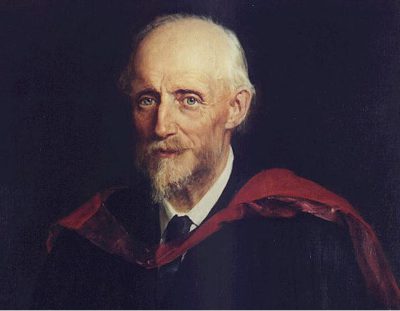Administration of the project
Generalized Reynolds Equation: Derivation
Reynolds equation is one of the fundamental equations of lubrication theory and tribology. In the simplest case, it considers incompressible and Newtonian lubricant. This model is sufficient to describe lubricant friction in some cases (relatively low loads and sliding speeds, no temperature rise). However, in many cases, the Newtonian cannot describe lubricant friction. This is particularly true for non-Newtonian lubricants, highly loaded contacts. In this cases, the classical equation cannot be used and a more generalized version has to be developed.
The reason for a generalization is in the fact that although pressure does not change across the lubricant film, the viscosity of the lubricant chagnes due to the variation of the speed of the lubricant layers, and correspondingly variation in temperature of the lubricant. On top of it, since the temperature varies, density is also affected.
There are several forms of the generalization of Reynolds equation available, which consider various aspects (see for example Dowson, 1962). one of the most general forms, incorporating non-Newtonian behavior, but also allows for density variation will be presented here following Yang Peiran and Wen Shizhu.

We start with the equilibrium equations equations under thin film approximation:
(1) 
where ![]() is lubricant pressure,
is lubricant pressure, ![]() are the shear stresses in corresponding directions. In general, the shear stresses are linked to the shear strains and viscosity according to the following relations:
are the shear stresses in corresponding directions. In general, the shear stresses are linked to the shear strains and viscosity according to the following relations:
(2) 
where ![]() are called equivalent viscosities. Following boundary conditions are imposed:
are called equivalent viscosities. Following boundary conditions are imposed:
(3) 
Substitution of the equations (2) into (1) and integrating with boundary conditions (3) gives following:
(4) ![Rendered by QuickLaTeX.com \begin{eqnarray*} u(z) = u_1 + \frac{\partial p}{\partial x} [ \int_{h_1}^{z} \frac{z'}{\eta_x^{*}} dz' - h\frac{\eta_{ex}}{\eta_{ex}^{'}} \int_{h_1}^{z} \frac{1}{\eta_x^{*}} dz'] + \frac{u_2-u_1}{h}\eta_{ex}\int_{h_1}^{z} \frac{1}{\eta_x^{*}} dz', \\ \label{complete_sys2} v(z) = v_1 + \frac{\partial p}{\partial y} [ \int_{h_1}^{z} \frac{z'}{\eta_y^{*}} dz' - h\frac{\eta_{ey}}{\eta_{ey}^{'}} \int_{h_1}^{z} \frac{1}{\eta_y^{*}} dz'] + \frac{v_2-v_1}{h}\eta_{ey}\int_{h_1}^{z} \frac{1}{\eta_y^{*}} dz' \end{eqnarray*}](https://quicklatex.com/cache3/3d/ql_b5b6683f8cb6b62b218994c450cd233d_l3.png)
where

Reynolds equation is obtained by integrating the continuity equation acrros the film thickness. In general, the continuity equation is given in the following form:
![]() .
.
It can be integrated from ![]() to
to ![]() and after manipulations gives the following generalized Reynolds equation:
and after manipulations gives the following generalized Reynolds equation:
![]()
Here,
(5) ![Rendered by QuickLaTeX.com \begin{eqnarray*} \bar u = \frac{u_1+u_2}{2},\bar v = \frac{v_1+v_2}{2}, \rho_e = \frac{1}{h} \int_{h1}^{h2} \rho dz, \\ \label{complete_sys2} ({\frac {\rho}{\eta}})_{ex}=12(\frac {\eta_{ex}\rho_{ex}^{'}}{\eta_{ex}^{'}})-\rho_{ex}^{''}, ({\frac {\rho}{\eta}})_{ey} =12(\frac {\eta_{ey}\rho_{ey}^{'}}{\eta_{ey}^{'}})-\rho_{ey}^{''} \\ \label{complete_sys3} \rho_{ex}^{*} = [\rho_{ex}^{'}\eta_{ex}(u_2-u_1)+\rho_e u_1]/\bar u, \rho_{ey}^{*} = [\rho_{ey}^{'}\eta_{ey}(v_2-v_1)+\rho_e v_1]/\bar v\\ \label{complete_sys4} \rho_{ex}^{'} = \frac{1}{h^2} \int_{h_1}^{h_2} \rho \int_{h_1}^{z} \frac{dz'}{\eta_x^*}dz, \rho_{ey}^{'} = \frac{1}{h^2} \int_{h_1}^{h_2} \rho \int_{h_1}^{z} \frac{dz'}{\eta_y^*}dz \\ \label{complete_sys5} \rho_{ex}^{''} = \frac{1}{h^3} \int_{h_1}^{h_2} \rho \int_{h_1}^{z} \frac{z^'dz'}{\eta_x^*}dz,\rho_{ey}^{''} = \frac{1}{h^3} \int_{h_1}^{h_2} \rho \int_{h_1}^{z} \frac{z^'dz'}{\eta_y^*}dz \end{eqnarray*}](https://quicklatex.com/cache3/38/ql_14aae31dba7d731a1f020991134d7e38_l3.png)
The generalized Reynolds equation obtained this way can be solved numerically, for example using finite elements (a full system method of Habchi) or finite difference method.



Be the first to comment